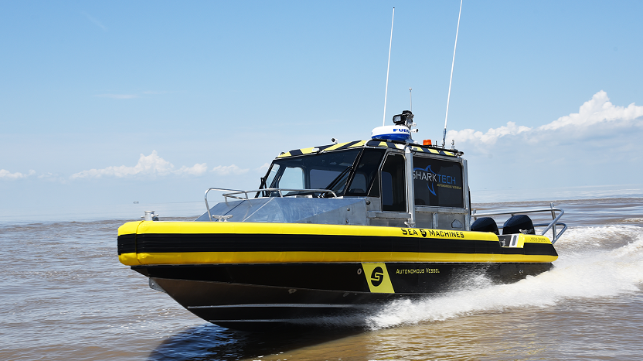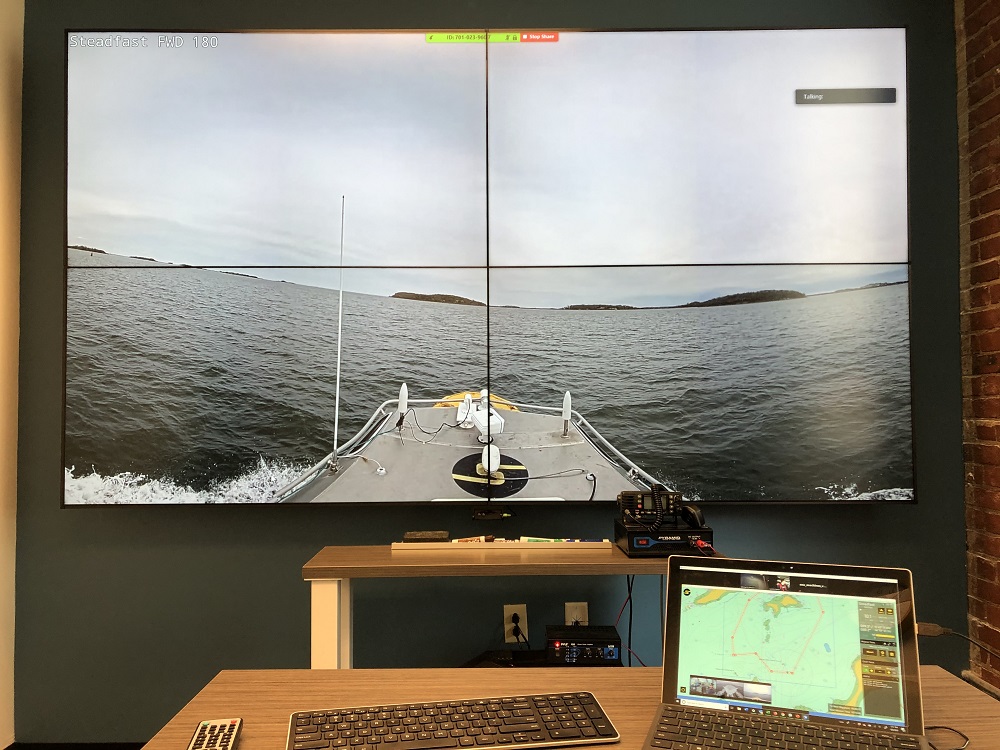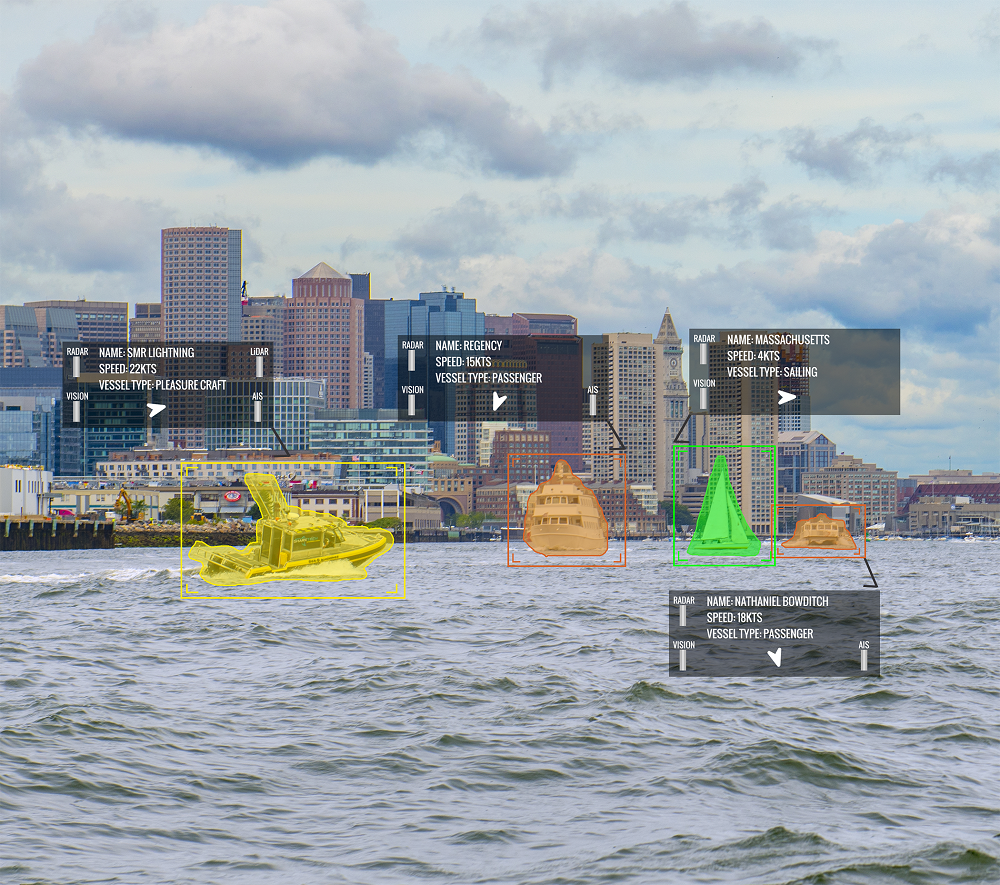Bright Horizons: Sea Machines Talks Growth and The Future

Boston-based vessel autonomy startup Sea Machines is making waves with its advanced remote-control and autonomous operation technology. It recently completed a successful Series B venture capital fundraising round with participation from some of the biggest names in the sector, including top naval shipbuilder Huntington Ingalls Industries. Founder and CEO Michael G. Johnson recently discussed how his company is modernizing the commercial marine industry.
Q: Sea Machines announced that it has raised $15 million in funding. Explain the significance of this and what it means for the company and greater maritime community?
The funds we were able to raise in this latest round are going to significantly impact Sea Machines, and therefore the maritime and marine industries as a whole. The funds will be put to use to further strengthen our technical development team as well as build out our next level of systems manufacturing and scale our operations group to support customer deployments. We will also be investing in some supporting technologies to speed our course to full dock-to-dock, over-the-horizon autonomy. The purpose of our technology is to optimize vessel operations with increased performance, productivity, predictability and ultimately safety.
Q: Was fundraising much more challenging this time around, considering our pandemic-induced recession?
On the whole, no. Raising capital is not meant to be easy but it’s safe to say that this round was simpler than previous raises. Because of where we are as a company, we have been proving our ability to retool the marine industry with our technology, and therefore we are delivering confidence to investors. We were forced to conduct the entire process by video conference, which may have increased overall efficiency of the raise as these rounds traditionally require thousands if not tens of thousands of miles of travel for face-to-face meetings, diligence, and handshakes.
Remote pitches also proved to be an advantage because it allowed us to showcase our technology in a more direct way. We did online demos where we had our team remotely connected to our vessels off Boston Harbor. We were really able to get the investors into a captain’s chair, as if they were remotely commanding a vessel in real-world operations. That worked out well.

Sea Machines' remote command station in Boston
Q: Tell us a little about your partnership with Huntington Ingalls (HII), America’s largest shipbuilder.
We are especially excited to be partnering with Huntington Ingalls in this round. What’s not to love about partnering with the builder of the SS United States, USS Enterprise and so many other amazing ships? HII is a solid and diversified company and as you know the leading capital ship supplier to the U.S. Navy. HII is a top choice partner for a growing marine autonomy company. They are more than a shipbuilder, also now leading in underwater autonomous systems, and they have a technical solutions group comprised of more than 6,000 personnel. The partnership gives us a supporting company to help us better serve U.S. government customers, a first-hand understanding of the technical needs of the U.S. Navy, and access to HII’s strengths in technical areas that are necessary to support autonomous operations, such as cybersecurity and modern HM&E. HII also lives and represents a social conscience that matches with modern society and our commitment to social responsibility.
Q: Sea Machines seems to have developed a strong foothold in the government industry with this announcement. Is that where you see your niche?
The government is an important and critical part of our growth strategy, but it’s just one piece. We also have a heavy emphasis on the task-driven workboat sector – marine survey, spill, fire, search-and-rescue, aquaculture and other boats – as well as the transit-driven maritime and passenger vessel sectors. Our autonomy can be used onboard as an advanced pilot assist system with a crew or provide remote command of a vessel.
Q: Which sectors seem to be the early adopters of marine autonomy?
It’s coming at us quickly. The defense and task-driven workboat sectors are the first adopters, commercial passenger and shipping are now in the early stage of innovation trials.
The areas of value provided by autonomous technology overlaps for all sectors, however, for the navy, new on-water capabilities and unmanned vessels are a leading driver, whereas commercial is looking for increased productivity, efficiency and predictable operations. Our systems meet all of these needs. Our technology is designed to be installed on new vessels as well as existing vessels. Our ability to upgrade existing fleets greatly reduces the time and cost to leverage the value of our autonomous systems. It definitely speeds up the adoption of the technology.

Sea Machines' A.I.-powered advanced perception system gives commercial vessel operators enhanced situational awareness via obstacle detection, collision avoidance and environment-understanding capabilities for increased safety, predictability and productivity on the water.
Q: Can you provide us with the latest on your technology development?
This month we are releasing software version 1.6 on our SM300. That’s six significant updates in 18 months, each one providing increased technical hardening and new base features and applicative features for specific workboat sectors. In January, we announced the receipt of ABS and USCG approval for our SM200 wireless helm and control systems on a major class of U.S.-flag articulated tug-barges (ATBs), the first unit has been installed and is in operation and we look forward to announcing details around it. We will be taking the SM200 forward into the type-approval process.
Sea Machines has also begun serving the survey vessel market with the first announced collaboration with DEEP BV in the Netherlands; the vessel outfitted with the SM300 will be entering survey service within the month. In the second half of 2020 we are also commencing onboard collaborations with some CTV operators serving the wind farm industry.
Q: In closing, what does the future look like for Sea Machines and our industry, with your systems on the market?
Being in our fifth year we have a good sense of what the industry needs and where it’s going. Sea Machines systems are already at work off the waters of four continents. Today we install systems on one or two vessels at a time and within a couple years it will be entire customer fleets at a swoop. To meet this demand, we are expanding our teams in Boston and Hamburg. We also recently opened an office in the Esberg, Denmark, to better serve the many forward-looking customers of that region.
The marine industries are a critically significant component of the global economy and it’s up to us within to keep it strong and relevant. Along with people, processes and capital, pressing the bounds of technology is a key driver. The world is being revolutionized by intelligent and autonomous self-piloting technology and today we find ourselves just beyond the starting line of a busy road to broad adoption through all marine sectors. If Sea Machines continues to chart the course with forward-looking pertinence then you will see us rise up to become one of the most significant companies and brands serving the industry in the 21st century.
This article is sponsored by Sea Machines.
The opinions expressed herein are the author's and not necessarily those of The Maritime Executive.
